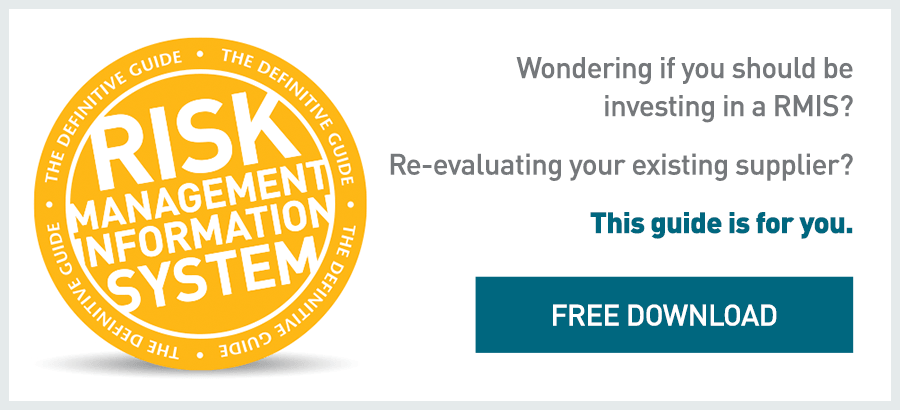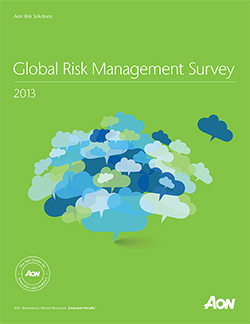 Is it a mystery what the C-suite wants from its risk management department? Simply put, senior leadership wants it to be less of a cost center. That is the beauty of the total cost of risk (TCOR) measurement. It demonstrates a risk manager's success at achieving that, while also succeeding in protecting the company from risk. But the seeming simplicity and clarity of the measurement also explains why TCOR could be a bane for risk management – because the C-suite might pay very close attention to it!
Is it a mystery what the C-suite wants from its risk management department? Simply put, senior leadership wants it to be less of a cost center. That is the beauty of the total cost of risk (TCOR) measurement. It demonstrates a risk manager's success at achieving that, while also succeeding in protecting the company from risk. But the seeming simplicity and clarity of the measurement also explains why TCOR could be a bane for risk management – because the C-suite might pay very close attention to it!
Simply defined, total cost of risk factors in the cost of transferred risk, retained losses, broker and third-party vendor fees, legal expenses, and the costs of safety and loss control. Broadly speaking, TCOR is one the few things that gets at the essence of what risk managers do.
For example, consider this real-world client: A $30 billion food company consolidated its legacy losses and managed its ongoing claims largely thanks to its new risk management information system (RMIS) expediting its renewal data collection process and facilitating claims management. For the risk management department, the inherent benefit was that it now had the tools and data to make better risk decisions – all while it was able to shave off $14 million in TCOR.
Though we cannot guarantee an equally impressive TCOR score, here are several examples of how TCOR savings can be realized with the help of tools like a RMIS:
- RENEWAL DATA CAPTURE: Multinational firms with offices, warehouses, factories and other properties scattered around the world often have no bigger, and tedious, insurance challenge than capturing correct and complete data on those properties for their underwriters. In fact, insurers and their reinsurers often lament the quality of data from insureds.
A risk management system can automate the process, pushing it out to staff in the field and validating the data as it pulls it back in. With a RMIS renewal module, risk managers can create a renewal presentation to show underwriters the nitty gritty – down to data on watercraft, aircraft, whatever crafts the organization insures.
The data reporting empowers underwriters to evaluate a risk manager's exposure better, leading to more appropriate pricing (i.e., lower TCOR). But again, the bigger picture is that the risk data given to underwriters creates the impression that the risk management team is on top of their risks. They want to own their risk. They will not let their risks get out of control, suggesting to the underwriters that there is less unknown risk to worry about.
- TREND REPORTING: One of the best-known benefits of RMIS tools is their ability to consolidate data from disparate data sources. Essentially, they are spreadsheet killers. These can save countless hours of manpower needed to populate numerous databases as well as the effort to collect all of these data sources (i.e., greater efficiency means greater savings and lower TCOR immediately). But the next step for risk management success is to make sense of the data, by drilling down into the losses, incidents and policies. Identifying trends can validate hunches and inform the strategies that will help risk managers chip away at TCOR in the long run.
- BEYOND TOTAL COST OF RISK: At risk of causing gasps in my audience, let's talk about how a RMIS system can provide analytical capabilities that deliver beyond TCOR and risk dollars saved or spent. Risk management teams can also measure incidents and claims versus real operational yardsticks, such as employee hours worked, customer traffic in stores or miles driven for employees.
By gaining their big risk picture and scoring short-term wins with immediate TCOR savings, risk managers will set themselves apart from the pack. Despite our kidding at the beginning of this post about the importance of TCOR to the corner offices, the ability to effectively manage it is less common than you might think. According to Aon's latest research (the 2012 Global Risk Management Survey), no more than one in three organizations appear to track and manage all components of TCOR – despite most companies knowing that lower TCOR should be a major benefit of good risk management.
Michael Theut is a member of the Solutions Consulting team with Aon eSolutions. Please email Michael at michael.theut@aon.com









 Is it a mystery what the C-suite wants from its risk management department? Simply put, senior leadership wants it to be less of a cost center. That is the beauty of the total cost of risk (TCOR) measurement. It demonstrates a risk manager's success at achieving that, while also succeeding in protecting the company from risk. But the seeming simplicity and clarity of the measurement also explains why TCOR could be a bane for risk management – because the C-suite might pay very close attention to it!
Is it a mystery what the C-suite wants from its risk management department? Simply put, senior leadership wants it to be less of a cost center. That is the beauty of the total cost of risk (TCOR) measurement. It demonstrates a risk manager's success at achieving that, while also succeeding in protecting the company from risk. But the seeming simplicity and clarity of the measurement also explains why TCOR could be a bane for risk management – because the C-suite might pay very close attention to it!



